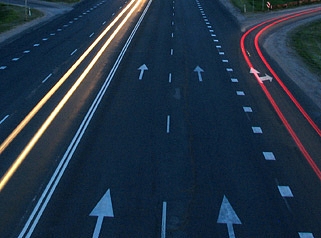About Lithuania
Lithuania is located on the eastern shore of the Baltic Sea, and it is the largest among three Baltic States in respect of population, territory and economy. Lithuania borders Latvia in the north, Byelorussia in the south-east, Poland in the south and Kaliningrad Region belonging to Russia in the south-west.
National economy
* In the 90-ies there was formed and started functioning a free market economy.
* Lithuania is characterized as a state with the best road infra¬structure in the Eastern Europe.
* Being located among the most rapidly developing EU Member-States since 2007, this Baltic State was also seriously affected by the global financial crisis. The Central Bank of Lithuania predicts a moderate growth of the State: 2,3 % GDP growth in 2012.
* Lithuania intends to join the euro zone in 2014.
* Lithuania has set a goal to become an innovative centre for the Baltic Region in 2020.
* In Lithuania there are three international airports: in Vilnius, Kaunas and Palanga.
* The largest port in the Baltic States is the Port of Klaipeda, being one of the most significant traffic centers in Lithuania.
Participation in the international organizations
* On September 17th, 1991 Lithuania became the UNO Member-State.
* The European Union (since 01.05.2004) and the North Atlantic Treaty Organization (29.03.2004) Member-State.
* Lithuania is the World Trade Organization (WTO; 2001) Member-State, it has joined the Schengen Area since 2008.
Government
* Since regaining its independence in the 90-ies, Lithuania has become an independent, democratic, parliamentary republic.
* The state power in Lithuania is exercised by the Parliament, the President of the Republic, the Government and the Court.
The President of Lithuania is elected by direct voting for five years, he supervises the foreign policy and the security policy.
A One-Chamber Parliament or Seimas is composed of 141 depu¬ties, they are elected for the period of four years.
History
* The Indo-European ethnic group – balts – inhabited the territory of Lithuania as from the 7th century B.C. Lithuania, which is situated at the crossing point of the western and eastern cultures, has experienced
a dramatic history of the national independence and formation.
* In signing the Kreva Agreement between Lithuania and Poland in 1385, Lithuania was turned into Catholicism, which traditions are still strong in the modern Lithuania. About 80% of believers are Catholics. During the period of Grand Duke Vytautas holding the power (1392–1430), Lithuania has become one of the largest European countries, extending from the Baltic Sea to the Black Sea. The period of formation of the State of Lithuania is considered to be the beginning of the 13th century, when in 1253 Mindaugas was crowed as the first governor of Lithuania.
* The year of the establishing of the present capital city of Lithuania – Vilnius – is considered to be 1323. The old town of Vilnius is one of the largest and most beautiful places in the eastern and central Europe and the UNESCO world culture heritage project.
* In the Middle Ages Lithuania was the largest state of the Eastern Europe, in which crafts and trade with other countries were developing.
* On February 16th, 1918 there was proclaimed an independent State of Lithuania. In 1940 Lithuania was occupied by the Soviet Army and it had to be a member of the USSR till 1990.
* On March 11th, 1990, Lithuania declared its independence.
Nature
* The landscape of Lithuania is formed by uplands and lowlands, with the narrow seaside lowland extending along the sea.
* Land useful for agriculture occupies 57%, forests and brushes – 30%, swamps – 3%, inland waters – 4,5%.
* In some areas in Lithuania deep underground there are mineral waters and thermal waters, which are used for medical purposes, the State has a well developed resort industry. Seaside resorts are Palanga and Neringa, and the continental treatment resorts – Druskininkai and Birštonas.
* Climate is moderate, from marine passing into continental, during a year there can be enjoyed four seasons. Average temperature in July is +17°C, in January -4,9°C. However, summer temperature can reach up to +30°C, and in winter it can lower to -32°C.
* Not far from Vilnius – Joneikiskiu Settlement, in the European Park, a geographical centre of Europe is located.
Culture and sport
* Every four years a Song and Dance Festival of Lithuania (Dainų šventė) is organized, gathering dozens of thousands singers and dancers. This Festival is included in the UNESCO World Heritage List.
* Lithuanians consider Mikalojas Konstantinas Čiurlionis (1875–1911) to be their most significant artist. His art, which is not limited to one sphere of art, is recognized as the most valuable contribution of Lithuanians to the world culture, and his name is mentioned along with such popular modernists as M. Kandinskis, E. Munhas, O. Redonas, F. Kupka and others.
* Basketball is one of the most popular sports in Lithuania. Lithuanians are really proud of the achievements of their basketball players, who popularize the name of Lithuania by their victories throughout the world.
QUICK FACTS
Name: Republic of Lithuania.
Area: 65 303 km2
Population: ~3,2 million (Lithuanians – 83,45%, Poles – 6,74%, Russians – 6,31%, others – 3,50%).
Capital city: Vilnius (553 200 inhabitants).
Government: independent democratic parliamentary republic.
Head of the State: president.
Currency: Lithuanian lit (litas (Lt)). 1 euro = 3,4528 Lt.
Language: Lithuanian.
Religion: Roman Catholicism (about 80%), there are also other religions – Orthodox believers, Evangelic-Lutherans, Evangelic-Reformers, Old Believers, Jews, Sunita Muslims, Karaims, and others.
Time zone: UTC+2
International telephone code: +370
National code in the global network: .lt
Living cost: Vilnius – the 133th expensive city worldwide (Mercer Human Resource Consulting data for 2011).
More information about Lithuania
State President – www.president.lt
Parliament – www.lrs.lt
Government – www.lrv.lt
Ministries of Lithuania – www.lrv.lt/en/government/apie-vyriausybe/ministries/
Non-government organizations in Lithuania – www.online.lt/horg.htm
Tourism portal of Lithuania – www.travel.lt
Statistics of Lithuania – www.stat.gov.lt
Lithuanian Development Agency – www.lda.lt
Lithuanian Wikitravel portal – http://wikitravel.org/en/Lithuania
Photo: Pilseta24.lv





